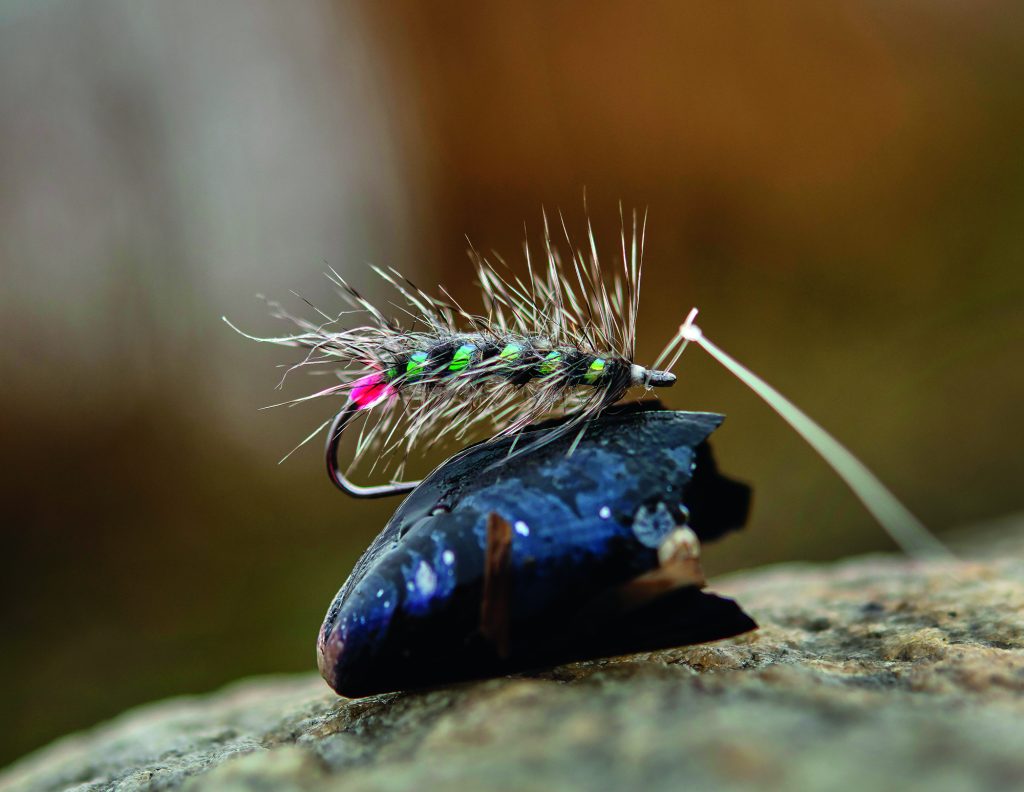
Frequent users of Instagram and YouTube know that Morten Hansen, also known as Coastfly, likes realistic imitations of shrimp. None the less his favourite shrimp fly is simple and features no feelers, shell or eyes. Follow along as Coastfly explains how he ties his Baboon Shrimp.
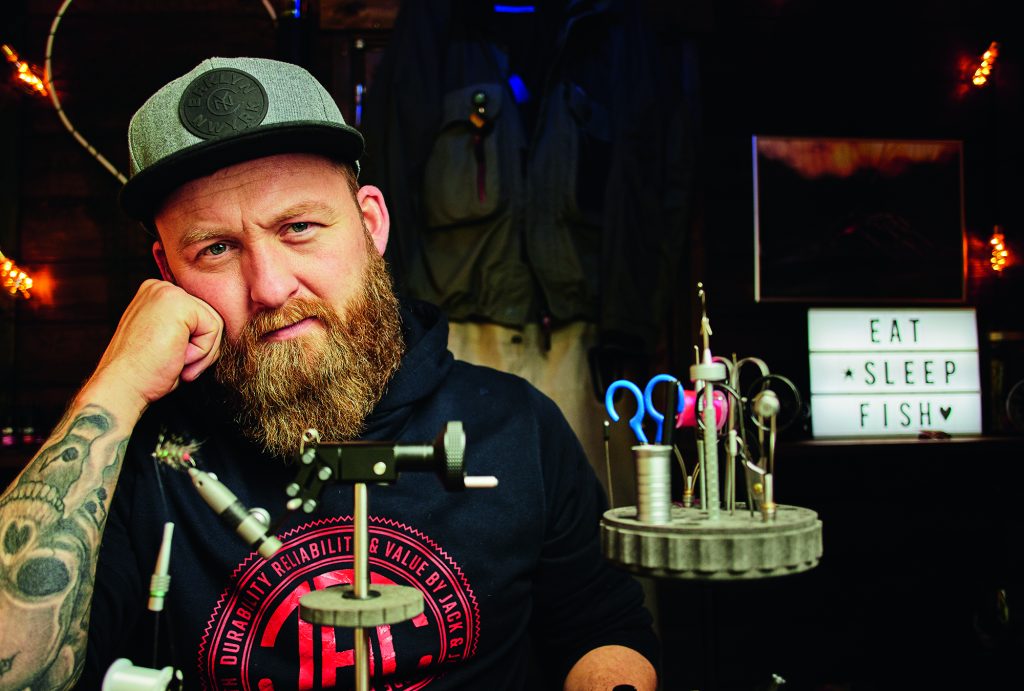
The aftermath of 15 years of shrimp revolution is settling. Today shrimp flies dominate most sea trout fly boxes and after the introduction of the Glitter Shrimp, the Piglet, Honey Shrimp, Final Shrimp, Glass Shrimp and many more the race seems to be slowing down. For years fly tiers have been debating feelers, legs, shrimp shells, colour combinations, tapers and transparency. A truce has settled amongst Scandinavian fly tiers and focus has shifted towards more simple and effective flies for sea trout.
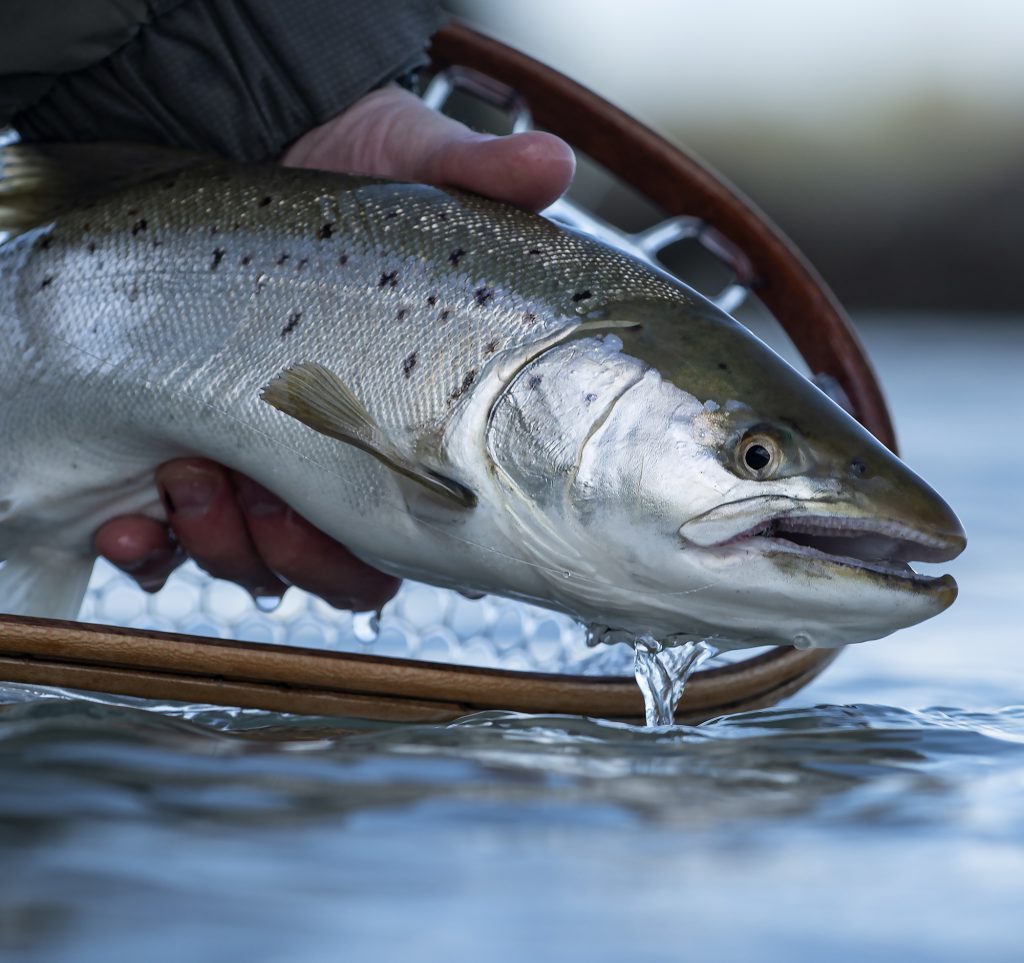
South Jutland Shrimp
Morten Hansen from the southern part of Jutland is a great believer in shrimp flies. He’s better know as Coastfly on YouTube and Instagram with plenty of followers. He’s also the man behind the very realistic Glass Shrimp, but his favourite fly for his home waters near Gråsten and on the island of Als, has more classic traits. The Baboon features, as real baboons, a striking red “hind part”, but apart from that there’s nothing spectacular about the fly. The Devil’s Advocate might even claim that is bears very little resemblance to the natural when sitting in the vice. It has no eyes and no feelers.
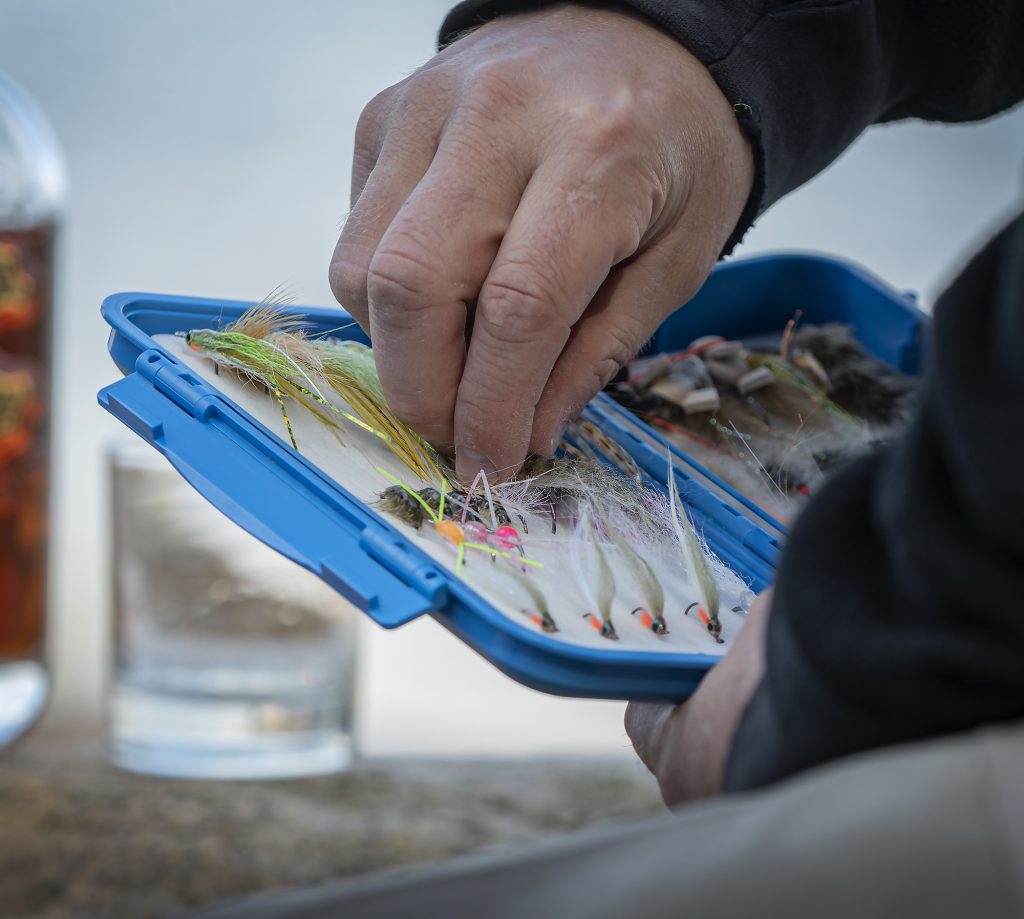
-The fly comes alive in the water because of the chosen materials, not so much because it looks like a shrimp, defends Morten.
-The realistic shrimp imitations can be very effective in warmer water, but now, in the cold season, it’s more effective to fish smaller flies tied with softer materials. The Baboon is sparsely dressed and light weight. The low weight ensures it can be fished slowly, hovering in the water, as the hackle and brushed dubbing body actually gives a nice impression of a small shrimp. There’s no guarantee for success, but a less precise imitation can be an advantage, as sea trout might also take it for other small prey. The fly is simple and fast to tie, which is an added bonus, Morten ends.
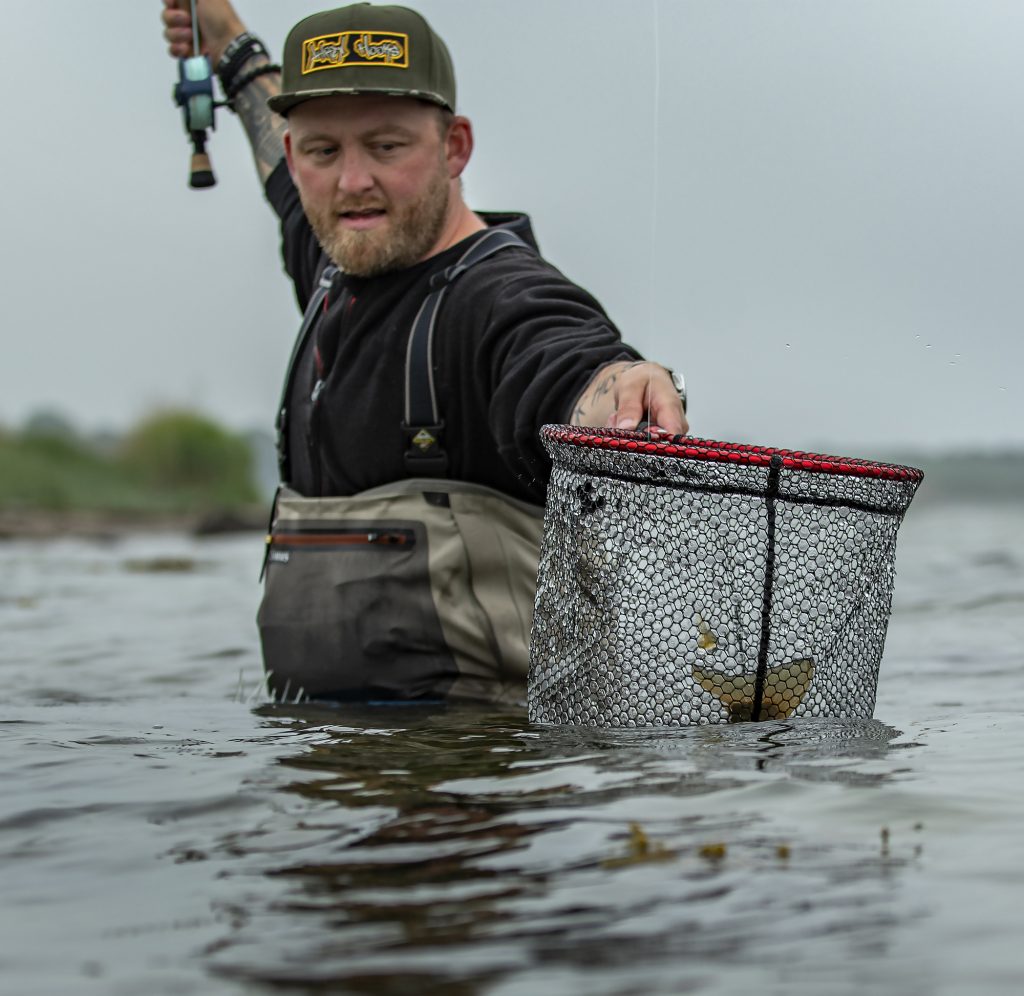
Good weather fisherman
Even if the sea trout fishing Dane prefers shrimp flies, he does take the sea trout’s relationship with imitations with a grain of salt.
-There’s a special feeling looking at a realistic shrimp fly in the vice, but I doubt the sea trout really appreciates the exact colour nuances and the spacing of the stripes on the rubber legs. I believe more in points of attraction as the hot pink strike point on the Baboon. And then of course it’s important to entice the sea trout with how the fly is moved.
-And I even prefer good weather. I like a mild day and not too much wind. That often means clear and calm water, which would often lead to the use of exact imitations, but I don’t find it crucial, stresses Morten.
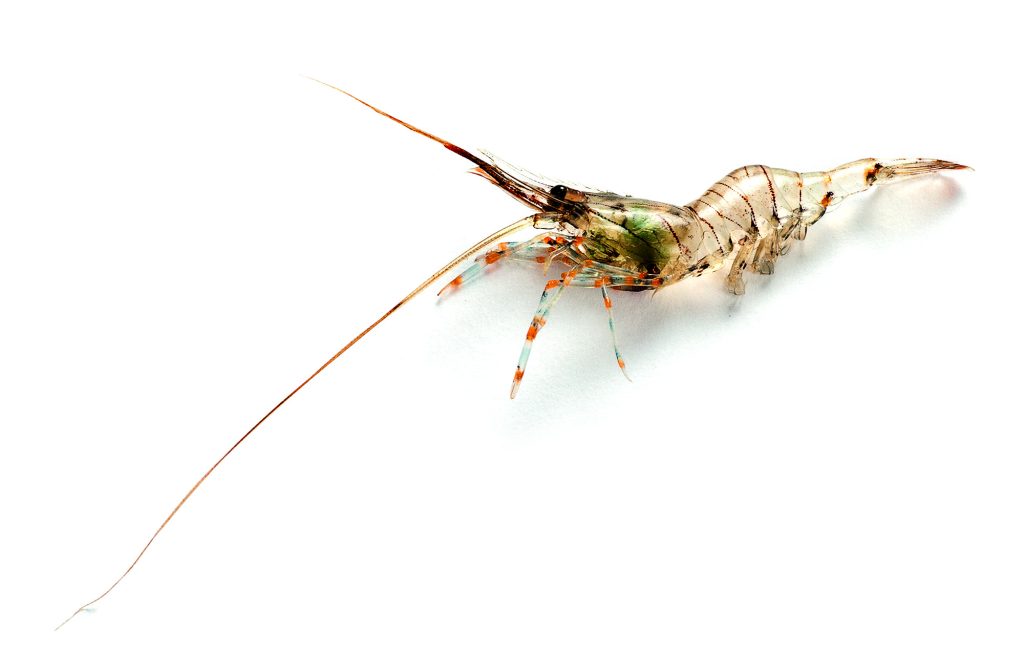
Seek the shrimp
Morten believes more in the right choice of fishing spot, and he doesn’t mind sharing how and where he chases sea trout with his Baboon-fly.
-Sea trout like shrimp, so I often seek out spots, where I suspect there are plenty of shrimp. When I spot shrimp in the shallows, I know that the sea trout won’t be far away. And since I prefer clam and mild conditions, I’m often able to spot sea trout and I really enjoy the visual aspect in casting to spotted fish with light tackle. There’s nothing unusual about my choice of tackle. I use a 6-wt rod, an intermediate line and 12-14’ of leader, ending in a 0,24mm tippet. I usually retrieve the Baboon in long, slow retrieves and accentuated pauses, where it just hovers. Like most, I often get a take when the fly sits static.
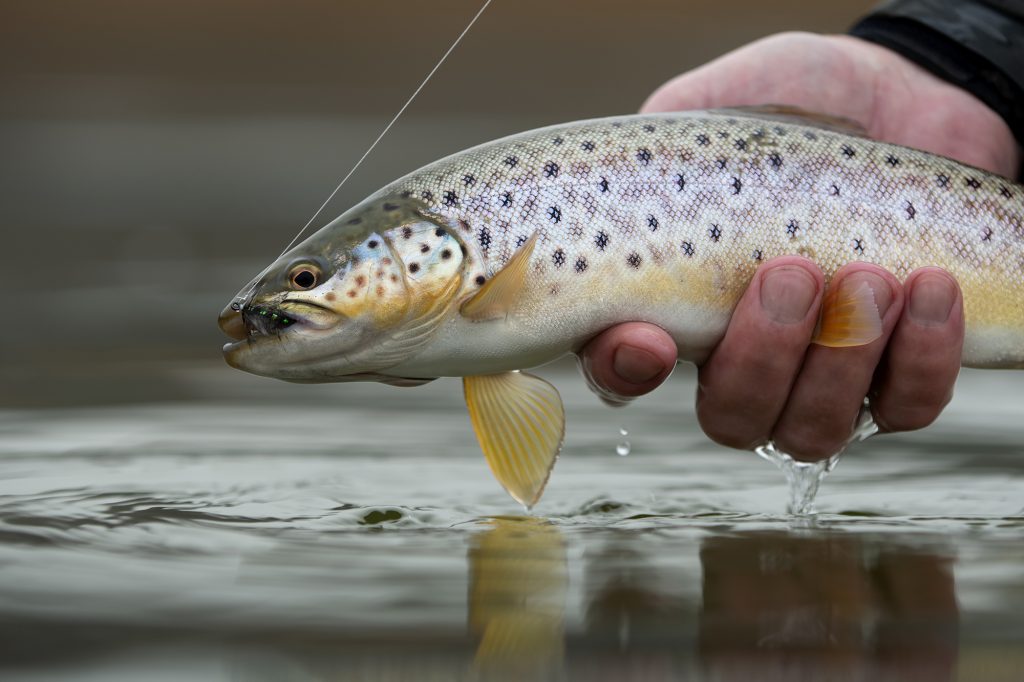
Tested on spinning tackle
Most fly fishers don’t care about how their flies perform on spinning tackle – not so with Morten. A local gear fisherman tests a lot of Morten’s flies, so he knows.
-My brother-in-law fishes mainly spin, and he likes my flies. He’s had grat success with the Baboon, so I know it works on spinning tackle as well. Fishing it on a bombarda is the obvious choice, but it also works well as a dropper above a lure.
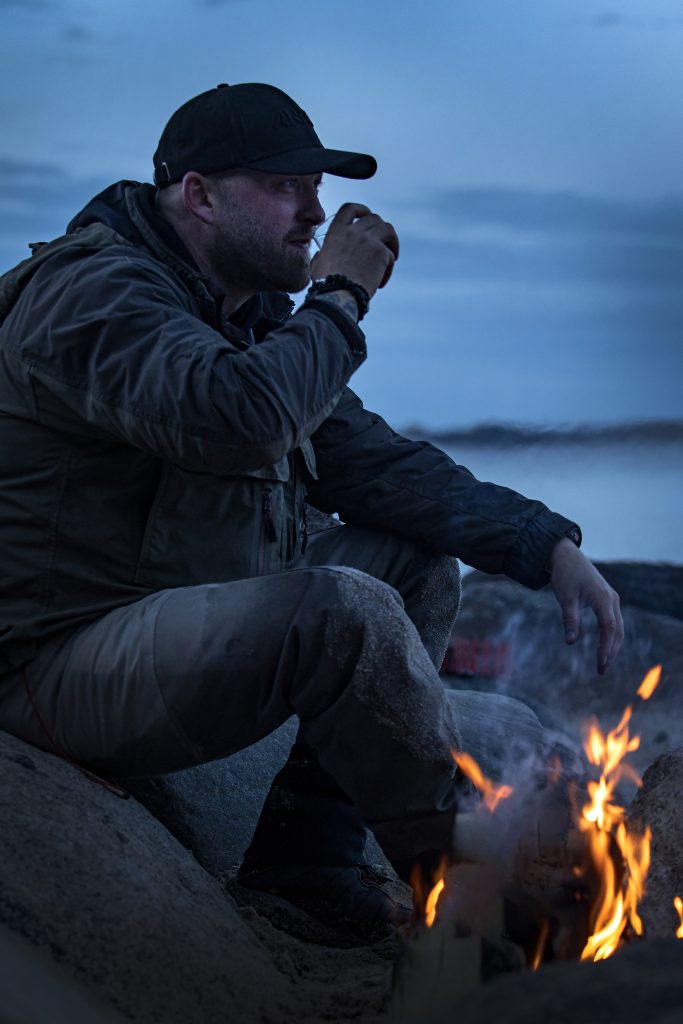
Tying Tips
Tying the Baboon is almost as simple as tying the flies beginners are usually presented with in the clubs, books and in clinics. Yet Morten has a few tips and short cuts to share, before you tie your first Baboon.
-Usually I make the strike point with tying thread covered with UV resin, but you can make it entirely out of UV resin. The fluorescent UV resins on the market are good for purposes like this. When you tie the hackle over the flash rib as I do, it’s exposed to the sea trout’s teeth, but you can reinforce with a rib of 0,18mm monofilament. That’s the way I show it in the video on youTube. Otherwise I recommend getting a house with a bathtub. Our new house has one and it’s invaluable when testing and developing flies, says Morten with a grin.
The Baboon
Hook: Ahrex NS 156, size 8-10.
Thread: Veevus G02 30D.
Strike point: Fluorescent pink UTC 70D w. UC resin.
Rib: Pearl mylar tinsel, small.
Body: SLF Squirrel Dubbing, natural grey.
Hackle: Grizzle cock hackle.
Place the hook in the vice. A hook with a nice, continuous curve is a good choice.
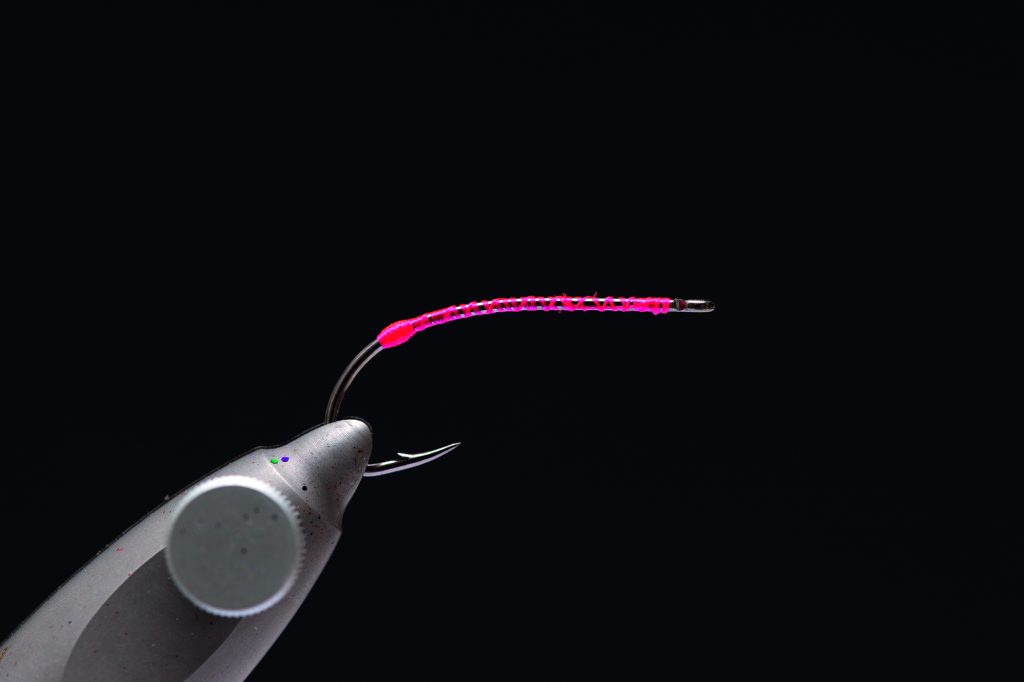
Tie a small ball with the pink thread opposite the barb.
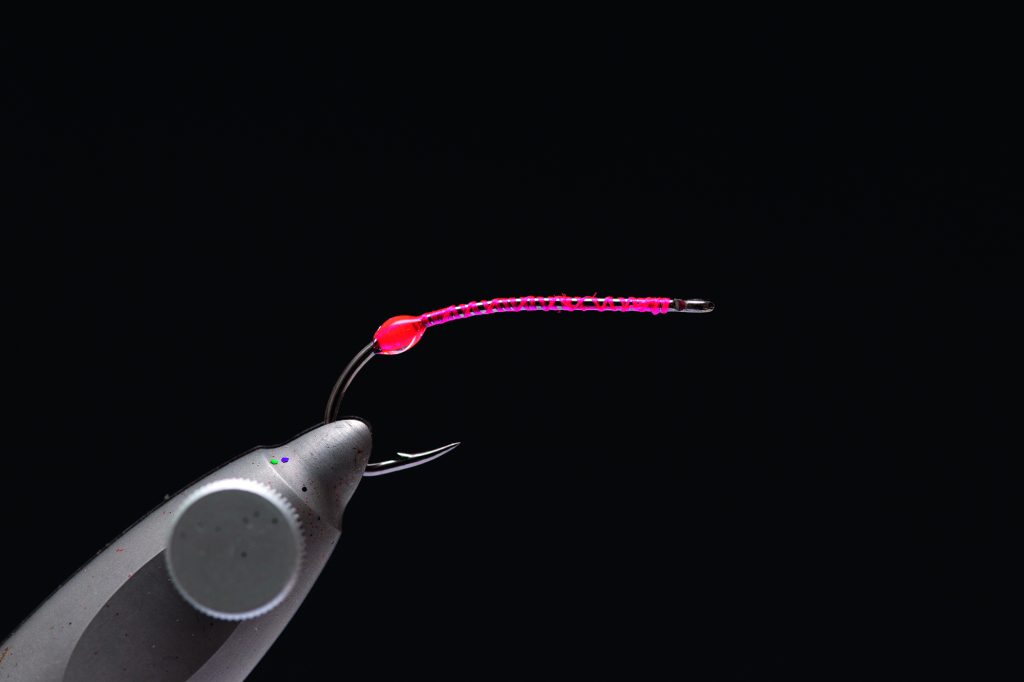
Cover the strike point with UV resin and set with the torch.
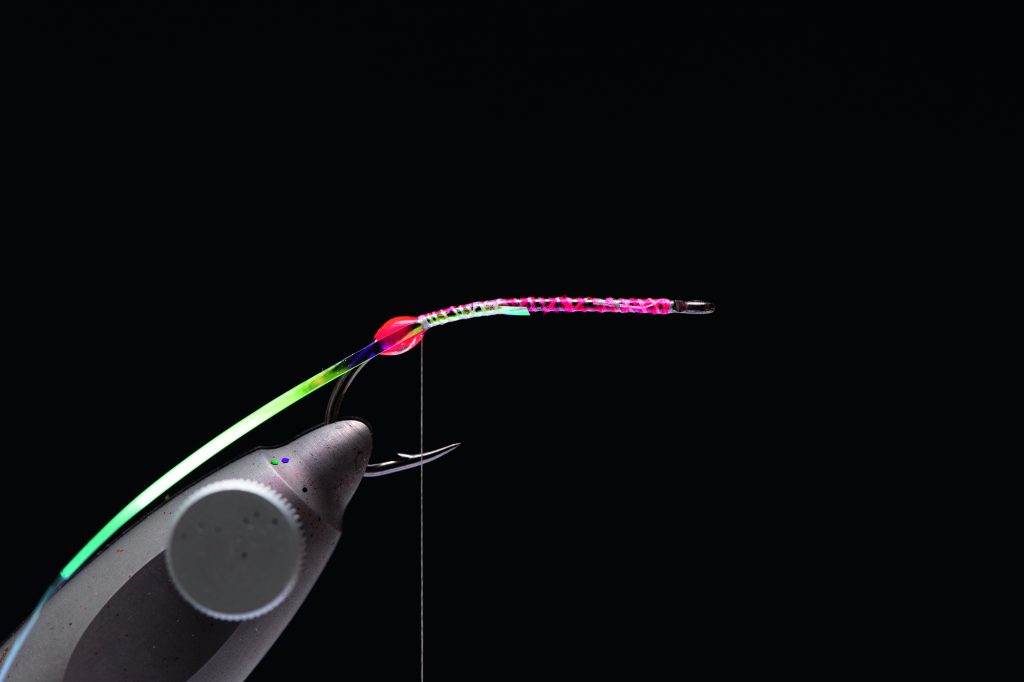
Attach the white thread and tie in the tinsel in front of the strike point.
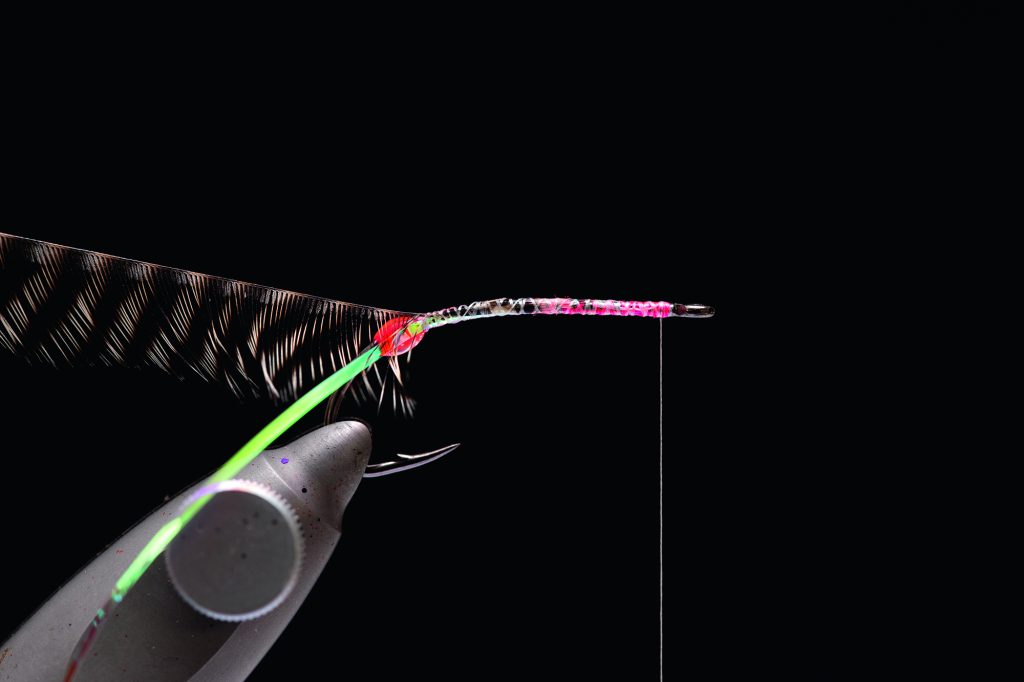
Strip the leading edge of the hackle and tie in by the tip, right in front of the strike point.
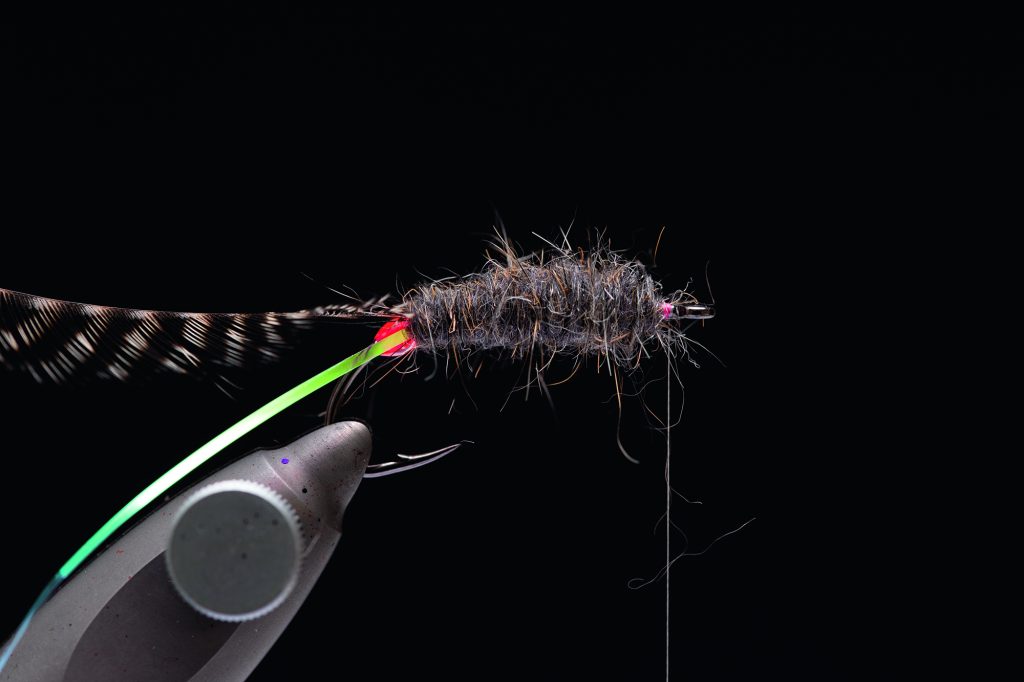
Move the thread to the eye and dub a thin layer of dubbing towards the strike point. Then dub a second layer forwards with a fuller, but loosely dubbed thread.
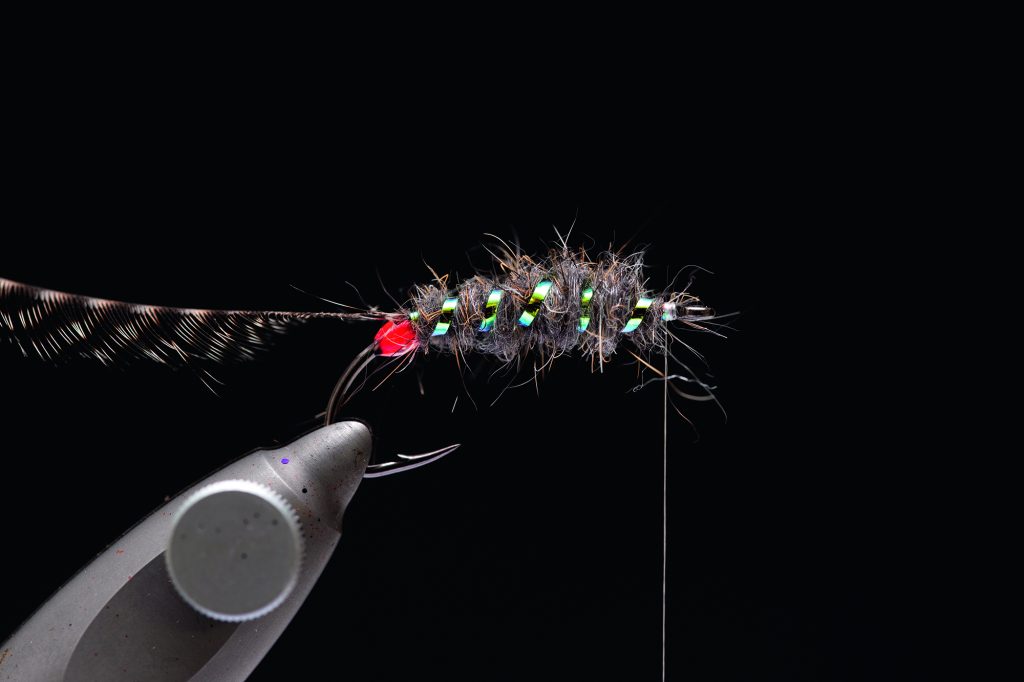
Rib the fly with tight wraps of the tinsel.
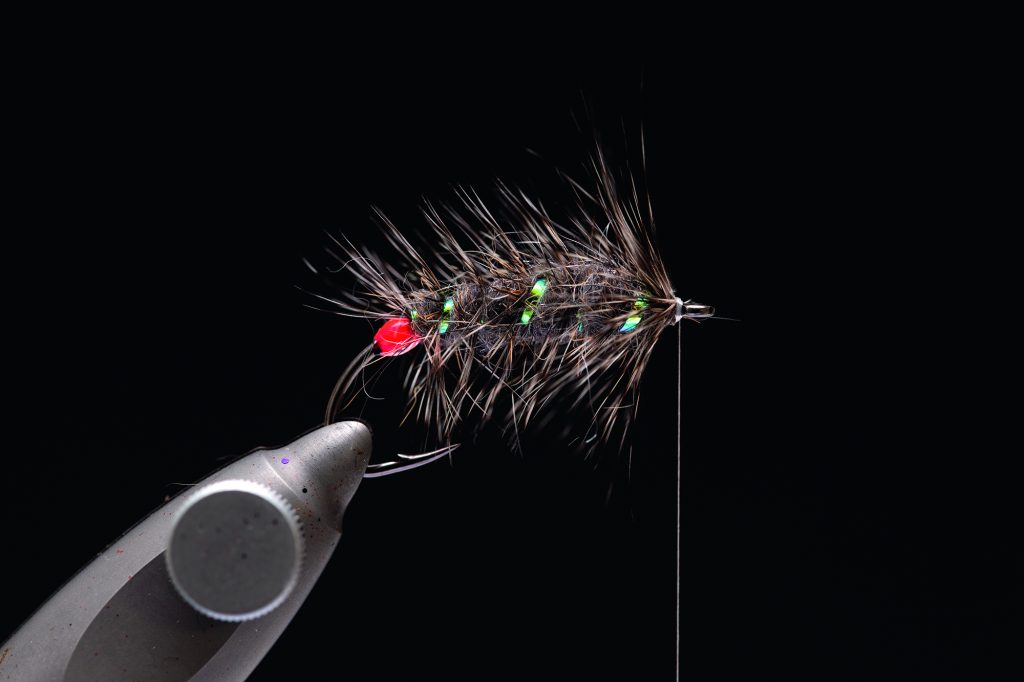
Follow along with the hackle, placing it alongside the rib.
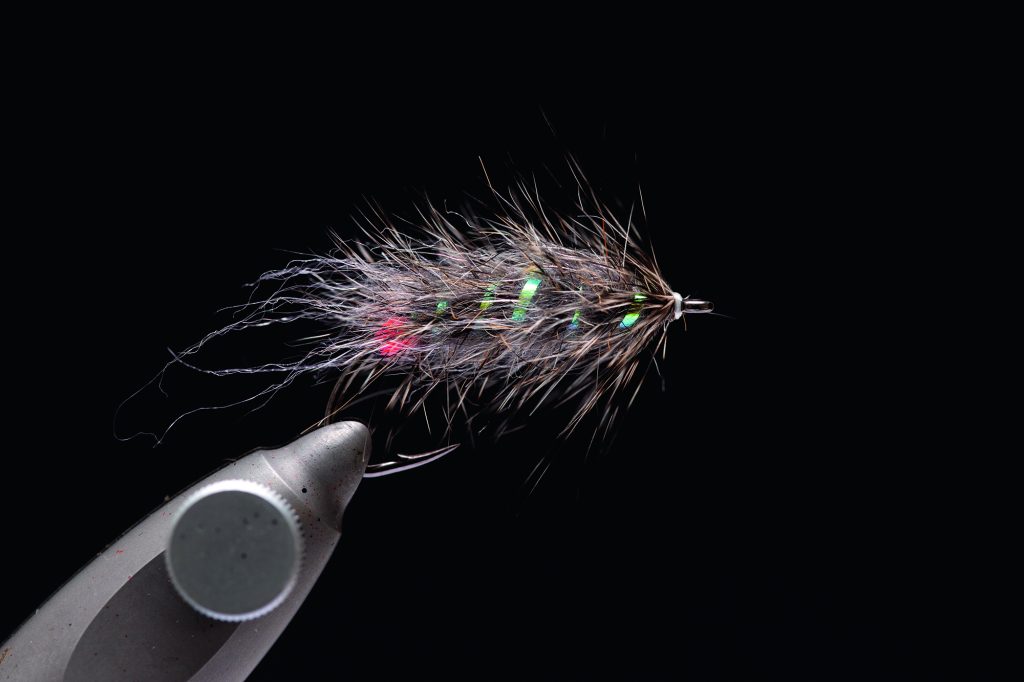
Brush out the dubbing. This is how the fly comes alive in the water.
Here you can watch Morten “Coastfly” Hansen tie the Baboon.
This article has previously been published in the Danish magazine “Sportsfiskeren” and the online magazine “In The Loop”.
